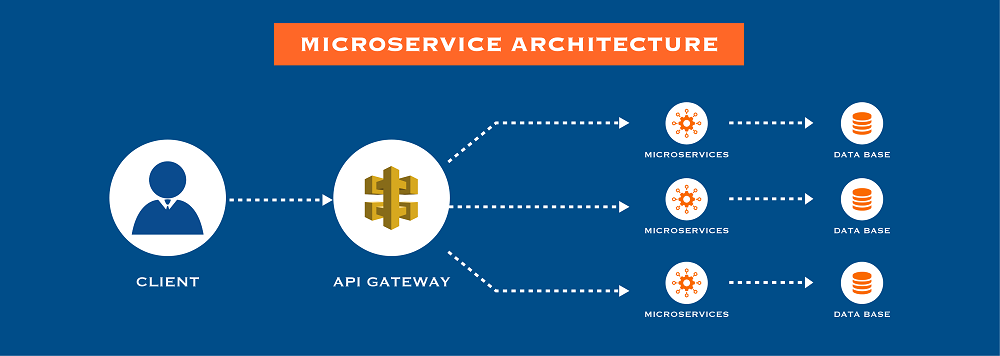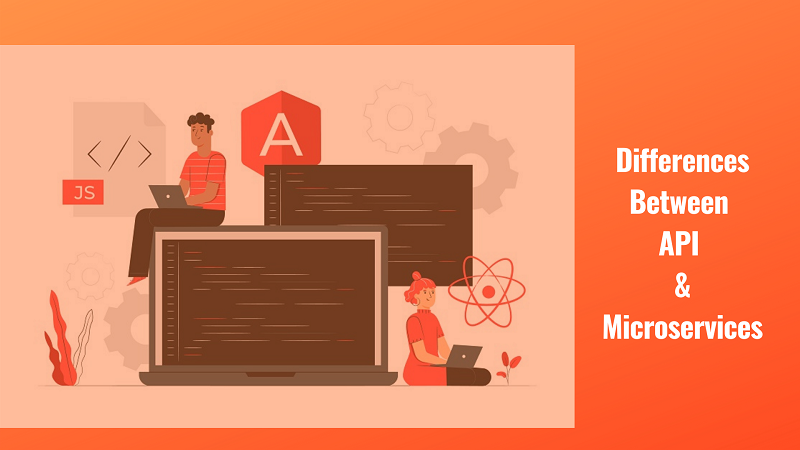For years, enterprises have been employing monolithic applications with complex functional frameworks. But today, with advanced solutions built with API’s and Microservice architecture are putting an end to their realm. With ever-changing requirements in the IT world, enterprises are required to adopt advanced applications with sophisticated features and functions that can accommodate changes throughout.
The rapid changes happening across the market and industries are pushing companies to embrace microservices, for it is a flexible enterprise architecture solution. Making the continuous development and delivery of applications more manageable across the digital environment, Microservices are becoming one of the most sought after software architectural design solutions.
However, Microservices are not the only pathway to simplifying workflows. Another very effective method is the usage of APIs for building architecture that enables straightforward exchange and transfer of data between employees and clients.
Now that we know what API and Microservices is, let us look at the major differences between them.

Microservices Architecture:
Microservice is essentially a block of code that performs a specific or multiple functions. This can range from the payment services in a UPI app on our phones to any app. Multiple microservices packed together fulfill the needs of an entire enterprise application. However, it is imperative to not let microservices get too large. If it does, these become large chunks of outdated applications fast.
If used wisely, small blocks of code as microservices can be exchanged with outdated modules, keeping larger applications up to date without letting them become antique
API Role in Workflow
We now know that swapping out small blocks of code in microservices is easy and helps keep apps updated. These multiple blocks of small codes constantly need to talk to each other, and this is where API comes into play. API offers this feature if used and managed well.
API offers a standardized system enabling access to apps, and services outside the smaller block of code. One microservice can use APIs to talk to another microservice. It is important to note that we do not programme all APIs to follow the same format. There is general acceptance for some protocols and many uses for application codes including, simple object access protocol, representational state transfer, JavaScript object notation and extensible markup language. An expert developer with excellent knowledge of codes can build these “standardized” environments with pretty much anything, and this might complicate communication between applications and most services.
How do APIs and Microservices talk to each other?
Most tech gurus warn that allowing APIs to enable direct communications between multiple microservices may be a recipe for disaster. Usage of many API methods between a calling microservice and multiple responding microservices can cause irreversible problems unless they undergo numerous repetitive testing to iron out even slight chances of errors.
The good thing, however, is the vast inventory of “standards” that developers can choose from. This can be a pleasant headache to have. Tech developers and Gurus explain Microservices perform optimally when talking with one environment.
How do we go about achieving this?
API is the answer to this question. APIs help manage the transit of information between one microservice and all other microservices through API calls, analyze and manage the microservices’ availability and security, and help in the translation of information between dissimilar APIs.
Though this is effective in a wide variety of situations, APIs are far from perfect. Let’s take the case of a programme developed by a developer single-handedly that does not mirror the expected protocols. They might have created this program for a particular reason, but in order for these to work perfectly, another custom gateway enabling the transaction of information might have to be written. It is best to avoid such situations as they are time-consuming and extremely difficult to get to work.
One area to start with APIs in your work is by including it in functions that your organization needs. Using API as a gateway between microservices to scale operations, security, and interoperability can be an excellent start. Building microservices on top of this architecture can analyze and report on all aspects of API transactions.
Bottom Line
Remember that all information from microservices has to be mediated by an API between a front-end, web-based service to a back-end service or between back-end services. This assures us of an environment where the API is fully managed and audits all the exchanges.
The architecture enables an organization to run and efficiently manage multiple microservice environments, add new microservices and provision for the company’s demands.

